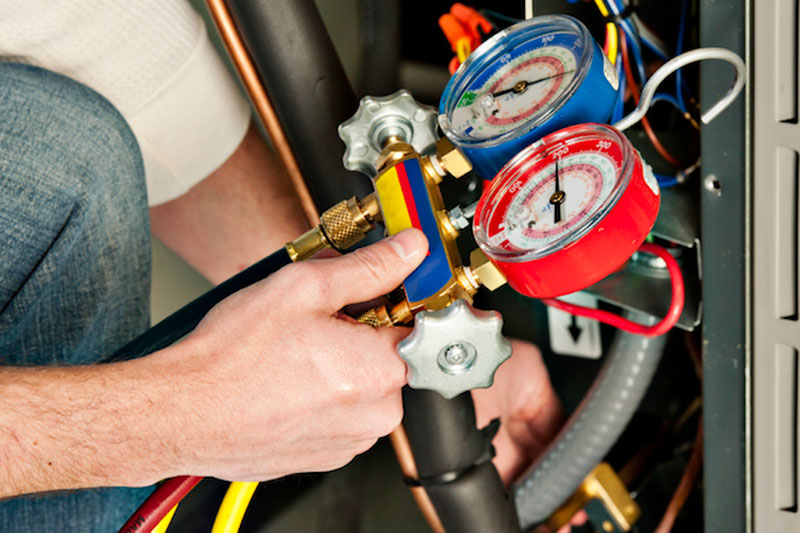
You might not think much about how your air conditioner operates, but it requires refrigerant to keep your home cool. This refrigerant is controlled by environmental regulation, as it contains chemicals.
Based on when your air conditioner was installed, it may use R-22, R-410A or R-32 refrigerant. We’ll discuss the differences and which air conditioner refrigerants are being phased out in Cedar Rapids, as well as how these phaseouts affect you.
What’s R-22 and Why Is It Phased Out?
If your air conditioner was installed before 2010, it possibly contains Freon®. You can discover if your air conditioner has it by reaching us at 319-208-2351. You can also look at the name plate on your air conditioner condenser, which is found outside your home. This sticker will include information on what type of refrigerant your AC uses.
Freon, which is also referred to as R-22, contains chlorine. Scientists consider Freon to be damaging to the earth’s ozone layer and one that results in global warming. The Environmental Protection Agency, which controls refrigerants in the United States, outlawed its production and import in January 2020.
I Have a R-22 Air Conditioner. Should I Replace It?
It differs. If your air conditioning is operating fine, you can continue to use it. With yearly air conditioner maintenance, you can expect your air conditioning to last around 15–20 years. However, the Department of Energy reports that replacing a 10-year-old air conditioner could save you 20–40% on annual cooling costs!
If you don’t get a new air conditioner, it might cause difficulties if you have to have air conditioning repair in the future, specifically for refrigerant. Repairs can be higher-priced, since only reduced levels of recycled and reclaimed R-22 is accessible.
With the end of R-22, most new air conditioners now use Puron®. Also known as R-410A, this refrigerant was developed to keep the ozone layer healthy. Since it requires a varying pressure level, it doesn’t work with air conditioners that rely on R-22 for cooling.
However, Puron still has the likelihood to create global warming. Because of that, it might also eventually be phased out. Although it hasn’t been communicated yet for residential air conditioners, it’s expected sometime this decade.
What Refrigerant Will Take Over R-410A?
In preparation of the discontinuation, some brands have begun using R-32 in new air conditioners. This refrigerant is classified low for global warming likelihood—approximately one-third less than R-410A. And it also reduces energy use by approximately 10%, according to the Intergovernmental Panel on Climate Change’s Fourth Assessment Report. That’s savings that may be sent on to you through your energy bills.
Ilten's Can Provide Support with All Your Air Conditioning Needs
In summary, the modifications to air conditioner refrigerant probably won’t concern you greatly until you have to have repairs. But as we talked about beforehand, refrigerant-related repairs can be more costly because of the reduced amounts that are accessible.
In addition to that, your air conditioner usually breaks down at the worst time, often on the hottest day when we’re experiencing lots of other requests for AC repair.
If your air conditioner requires an outdated refrigerant or is aging, we recommend installing an up-to-date, energy-efficient air conditioner. This provides a hassle-free summer and can even decrease your utility costs, especially if you get an ENERGY STAR®-rated system. Plus, Ilten's offers many financing options to make your new air conditioner even more affordable. Contact us at 319-208-2351 to start today with a free estimate.
